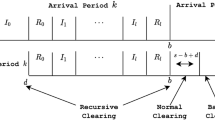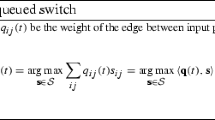Abstract
Consider the following problem. A switch connecting n input channels to a single output channel must deliver all incoming messages through this channel. Messages are composed of packets , and in each time slot the switch can deliver a single packet from one of the input queues to the output channel. In order to prevent packet loss, a buffer is maintained for each input channel. The goal of a switching policy is to minimize the maximum buffer size. The setting is on-line; decisions must be made based on the current state without knowledge of future events. This general scenario models multiplexing tasks in various systems such as communication networks, cable modem systems, and traffic control. Traditionally, researchers analyzed the performance of a given policy assuming some distribution on the arrival rates of messages at the input queues, or assuming that the service rate is at least the aggregate of all the input rates. We use competitive analysis, avoiding any prior assumptions on the input. We show O(log n )-competitive switching policies for the problem and demonstrate matching lower bounds.
Similar content being viewed by others
Author information
Authors and Affiliations
Rights and permissions
About this article
Cite this article
Bar-Noy, Freund, Landa et al. Competitive On-Line Switching Policies. Algorithmica 36, 225–247 (2003). https://doi.org/10.1007/s00453-003-1014-9
Issue Date:
DOI: https://doi.org/10.1007/s00453-003-1014-9




